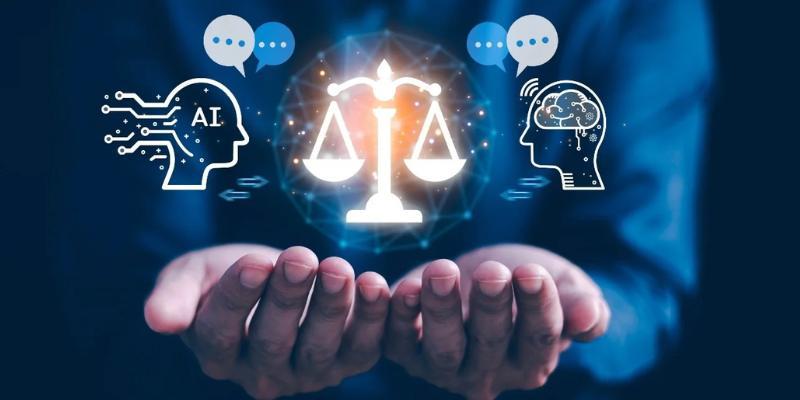The recent economic downturn has accelerated the adoption and innovation of artificial intelligence (AI) technologies across industries. Businesses facing financial constraints are turning to AI for cost-efficiency, automation, and enhanced decision-making. This challenging economic climate catalyzes groundbreaking advancements, reshaping strategies and highlighting AI's growing role in driving resilience and growth.
Redefining Efficiency: Automation as a Strategic Imperative

In times of economic uncertainty, companies have a defined requirement: to cut down on operational expenses, but at the same time ensure that service delivery is not affected or even enhanced. Such an act of finding the middle ground has caused the use of AI-driven automation to skyrocket.
AI has become an essential element of operations as opposed to an adjunct technology. Smart automation is currently used in many jobs such as data entry, supply chain logistics, service users, HR activities, and marketing analytics. With natural language processing (NLP), robotic process automation (RPA), and machine learning algorithms, the face of business is changing, making businesses less manual-reliant and faster and more precise.
Financial Constraints Driving Digital Transformation:
The digital transformation has usually been considered a lengthy strategic target. Nevertheless, economic crises have lowered the time frame, and the digitization of solutions is one of the ways to move quickly. Artificial intelligence is at the core of such accelerated evolution.
Companies are including AI in their main frameworks to facilitate internal transactions and improve customer experiences. Be it chatbots, recommendation engines, fraud detection systems, or using predictive analytics, the role of AI in enabling quick digitization has become a necessity.
As an example, the retail business sector is utilizing AI to conduct consumer behavior research, ensure that the inventory is optimized, and anticipate patterns of demand based on extraordinary accuracy. In finance, the algorithmic trading platforms and real-time risk assessment provide institutions the dynamism in the volatile markets. What we end up with is a smarter, faster, and more connected digital ecosystem prompted by the economic necessity of agility.
Startups and SMEs: Innovation Amidst Adversity
While large enterprises typically have more resources to weather financial storms, startups and small to medium-sized enterprises (SMEs) are often more agile and responsive to emerging technologies. During downturns, these entities face greater pressure to innovate quickly, efficiently, and cost-effectively—a challenge that AI is uniquely equipped to address.
Startups are leveraging AI to develop lean, scalable solutions that directly tackle pain points across sectors. From AI-enabled customer onboarding tools to intelligent diagnostics in health-tech, startups are creating value without the heavy overhead of traditional infrastructure.
Meanwhile, SMEs are integrating AI tools to optimize resource allocation, predict business risks, automate client interactions, and make data-driven decisions that would otherwise require large analytics teams. Economic constraints have not stifled innovation—they have made it more focused, more creative, and more impactful.
AI-Driven Cost Optimization and Predictive Risk Management:
Financial pressure compels organizations to make smarter, faster decisions. AI technologies offer unparalleled capabilities in analyzing large datasets, identifying trends, and generating actionable insights in real-time. As a result, AI has become a critical tool for cost optimization and risk mitigation.
In manufacturing, predictive maintenance powered by AI can foresee equipment failure, reducing costly downtime and maintenance expenses. In retail, dynamic pricing models adjust prices in response to consumer demand, competition, and seasonal patterns, ensuring profitability even in volatile markets.
AI also excels at identifying financial and operational risks. Advanced fraud detection systems in the financial sector monitor thousands of transactions per second, flagging anomalies and reducing exposure. Risk-scoring models based on AI algorithms allow organizations to anticipate potential disruptions and respond proactively.
Workforce Evolution: Augmentation, Not Replacement
One of the most significant shifts during economic downturns is workforce restructuring. As businesses seek efficiency, there is a natural pivot toward AI-enabled workflows. Yet contrary to fears of mass job displacement, AI is increasingly being used to augment rather than replace the human workforce.
AI systems handle repetitive, data-heavy tasks, allowing human employees to focus on creativity, strategic thinking, and high-touch responsibilities. The result is a more balanced, efficient, and empowered workforce. For example, in customer service, AI can handle routine queries while agents focus on complex cases that require empathy and nuanced judgment.
This shift has also accelerated demand for new skills. Employees across sectors are reskilling in data literacy, machine learning principles, and AI systems operation. As companies invest in workforce upskilling programs, a new collaborative model between humans and machines is emerging—one that aligns with the broader goals of resilience and agility.
AI’s Diverse Footprint During Economic Contraction:
The influence of AI during downturns is not limited to a single industry. Instead, its impact spans across sectors, each adopting AI according to its unique challenges and needs.
- Healthcare: AI is being deployed to streamline diagnostics, optimize administrative operations, and improve patient engagement. Intelligent triage systems and automated billing processes reduce costs while maintaining the quality of care.
- Education: Learning management systems powered by AI deliver personalized content, track student progress, and provide insights for instructors, offering flexible, scalable solutions during budget constraints.
- Logistics and Transportation: AI enhances route optimization, fleet management, and delivery forecasting, ensuring efficient operations even with fuel price volatility and labor shortages.
- Financial Services: AI-driven analytics support investment strategies, credit scoring, compliance tracking, and customer risk profiling—enabling informed decisions despite turbulent markets.
Each use case reflects a shared theme: the need for rapid, intelligent, and cost-effective solutions in uncertain times.
How Public-Private Partnerships Accelerate AI Development
AI innovation during economic downturns is not solely an enterprise initiative. Public and private sectors are increasingly collaborating to fund, guide, and regulate AI development.
Government grants, research incentives, and industry consortia are supporting startups and academic institutions focused on AI-driven problem-solving. Regulatory bodies are also working to establish clear frameworks that promote ethical use, data privacy, and transparency in AI systems.
These collaborations not only ensure continuous innovation but also create an ecosystem where public interest, commercial value, and technological advancement can coexist harmoniously. By encouraging responsible development and deployment, such alliances help integrate AI more meaningfully into societal and economic recovery efforts.
Ethical Considerations in AI Development
Amid rapid AI deployment, ethical considerations must remain at the forefront. Economic urgency should not override the need for fairness, transparency, and accountability. Unchecked AI systems can perpetuate biases, compromise data privacy, and erode trust.
To address this, many organizations are implementing internal governance frameworks for AI. This includes bias detection protocols, explainable AI models, and audit trails to ensure algorithms operate within ethical boundaries.
Furthermore, international organizations and think tanks are advocating for standardized ethical guidelines, encouraging developers and enterprises to prioritize inclusive and socially responsible AI practices. In downturn-driven innovation cycles, ethical integrity is not optional—it is essential for sustained public trust and regulatory compliance.
Conclusion:
Economic downturns are often viewed as periods of regression and uncertainty. Yet, history shows that some of the most groundbreaking technological shifts emerge from challenging times. The evolution of AI in response to economic constraints is a prime example of innovation driven not by abundance, but by necessity. As industries navigate financial turbulence, AI offers a strategic advantage, facilitating operational efficiency, empowering agile decision-making, and enabling meaningful transformation.












